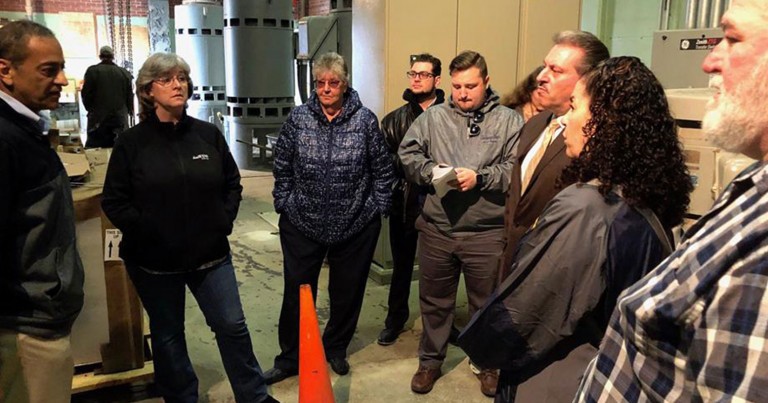Photo Courtesy of Assemblywoman Pheffer Amato’s Office
“It was great to attend Stamford to get an in-person look at their hurricane barrier that helps to keep their city resilient,” Pheffer Amato said.
By Forum Staff
A group of area elected officials and civic leaders that recently ventured to Stamford for a tour of its storm-resiliency initiatives gave the southeastern Connecticut town high marks for its commitment to protecting flood-prone neighborhoods.
Assemblywoman Stacey Pheffer Amato (D-Howard Beach), State Sen. Joe Addabbo, Jr. (D-Howard Beach), and several community leaders, including Community Board 10 Chairwoman Betty Braton and New Hamilton Beach Civic President Roger Gendron trekked north to learn more about Stamford’s vaunted Hurricane Protection Barrier—and what it could do for vulnerable South Queens communities.
According to the U.S. officials, the $14.5 million Stamford Hurricane Protection Barrier was installed by the corps in Stamford Harbor in 1969. The barrier protected Stamford from significant devastation during Superstorm Sandy in October 2012, and staved off $38.4 million in damage up until that point.
According to the corps, the SHPB consists of three elements:
• A barrier at the east branch of Stamford Harbor that is composed of a 2,850 foot-long earthfill dike with stone slope protection. It has an elevation of 17 feet. A 90-foot-wide opening is provided for navigation, and a pump station discharges interior drainage.
• The second element is a barrier that provides protection at the west branch of the harbor. This barrier, which has an elevation of 17 feet, is composed of a 1,350-foot-long concrete wall; and 2,950 feet of earthfill dike with stone slope protection and a pumping station.
• The third portion provides protection at Westcott Cove. This barrier is a 4,400-foot earthfill dike with stone slope protection having a maximum elevation of 19 feet. It boasts two pumping stations.
The tour also included a visit to a water-pumping station and the barrier’s operations. Additionally, the Queens delegation took the opportunity to speak with Stamford Mayor David Martin about his experience with storm resiliency and how the barrier has helped to achieve that goal.
“It was great to attend Stamford to get an in-person look at their hurricane barrier that helps to keep their city resilient,” Pheffer Amato said. “Hamilton Beach and Howard Beach have long suffered due to their proximity to the water and lack of protection from storm surges and flooding, which the USACE has been aware of for over 50 years. This is exactly the kind of resiliency measure that would be perfect for long-term protection for communities bordering Jamaica Bay, and I will continue to urge the USACE to consider such an option.”
Braton added, “Being able to see the Stamford barrier along with the dikes and pumping facility components associated with it up-close was beneficial. It was well-worth the trip for the opportunity to visualize how a similar system could benefit Community Board 10’s Sandy-impact zone. The discussion between Stamford officials and our delegation was informative and appreciated. USACE now needs to get busy to provide protection for Howard Beach and Hamilton Beach, sooner rather than later, in order to protect our people and prevent further negative economic impacts on our communities.”

